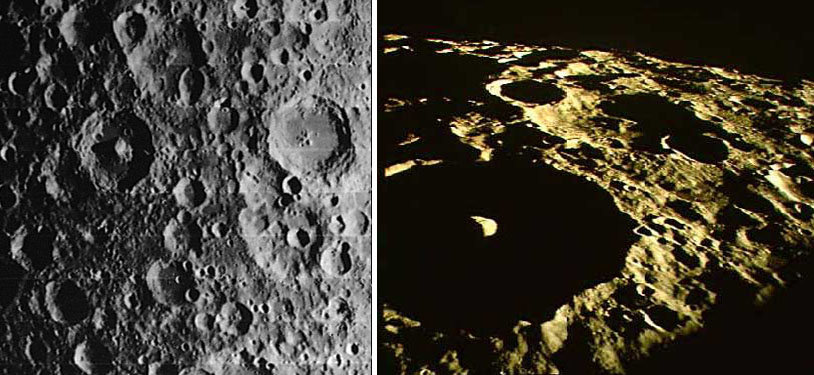
left image from Lunar Orbiter II 33M and right image from Apollo 11-44-6606
Central peak heights are roughly one-half their crater’s depth. For example, Tycho is 4.6 km deep and its peak is 2.26 km high. This is consistent with Madler’s Rule, which Johann Madler derived in the 1830s from his measurements of craters with a three inch refractor. Madler proposed that the summits of central peaks do not rise above the level of the surrounding terrain. That is what would be expected if central peaks form by some sort of isostatic rebound. But there must be another explanation for the farside crater Icarus (left side of left image). The central peak of this 96 km wide crater appears to be not only higher than the surrounding terrain, but is even higher than its rim. The left image, from a Lunar Orbiter II frame, shows that the central peak casts a longer shadow than its crater wall, and therefore has greater relief. In the right image, an Apollo 11 handheld photo, the peak juts high above the shadow cast by its rim. The explanation for the high peak is unknown, so naturally it has been said to be volcanic, the standard interpretation for lunar landforms we don’t yet understand. Although the Icarus peak is more massive than is typical the crater is otherwise a normal looking impact crater. We just don’t understand it’s origin, yet.
Technical Details:
I wrote a paper decades ago on the heights of central peaks using measurments i made on Lunar Orbiter photographs. Its amazing that no one has checked that work! I would love to see new measurements of central peak heights.
COMMENTS?
Click on this icon File:PostIcon.jpg at the upper right to post a comment.



